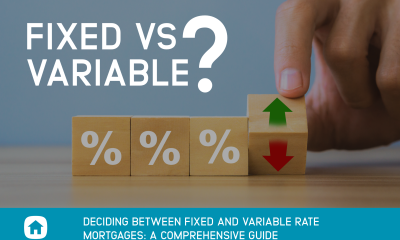(Special) – While most Canadians wait until they turn 71 to convert their Registered Retirement Savings Plan (RRSP) into a Registered Retirement Income Fund (RRIF), there can be strategic advantages to withdrawing some funds from your RRSP earlier.
A RRIF is an extension of an RRSP. While an RRSP is used to save for retirement, a RRIF is used to systematically draw income during retirement.
Under current rules, an RRSP must be converted either to a RRIF, an annuity or paid out in a lump sum by the end of the calendar year in which you turn 71. The majority of Canadians opt to convert their RRSP into a RRIF after they turn 71. You can convert into a RRIF at age 65 and begin to take annual payouts.
“There can be good reasons for early withdrawals,” Scott Evans, a financial adviser with BlueShore Financial in Vancouver, said in an interview. “You should look at your tax bracket now and what you expect it to be in your retirement years. It may be best to get some of that money out when you are in a lower tax bracket.”
A common tax strategy involves converting a small portion of an RRSP into a RRIF as early as age 65, when the taxpayer becomes eligible to apply up to $2,000 of eligible annual retirement income toward a 15-per-cent federal pension credit, plus applicable provincial or territorial credits.
Withdrawals are considered taxable income and are added to your other income. Withdrawing funds early may end up increasing your income, putting you in a higher tax bracket and resulting in your Old Age Security (OAS) payments being clawed back.
If your 2018 net income before adjustments is greater than $75,910 ($77,580 for 2019) then you will have to repay 15 per cent of the excess over this amount to a maximum of the total amount of OAS received. The OAS clawback threshold is indexed each year in the same manner as federal tax brackets and personal tax credits.
Taxpayers who still have contribution room to their and/or their spouse’s Tax-Free Savings Account may want to withdraw some money from their RRSP to top up their TFSAs where money grows tax-free and does not contribute to income when withdrawn.
RRSP withdrawals also can be very beneficial for younger people to help them with the purchase of a house or for further education under the first-time Home Buyers and Lifelong Learning Plans.
Couples buying their first home can withdraw up to $25,000 each from their RRSPs tax-free and then repay the money over the next 15 years. Repayments do not start until the year after the withdrawal is made. If a repayment is not made that amount is considered taxable income.
As well, it is possible to borrow up to a total of $20,000 (a limit of $10,000 per year) over a maximum of four years to fund studies at a qualified educational institution for you or your spouse, but not your children. Amounts withdrawn are not subject to taxes on withdrawal and at least 10 per cent of the amount borrowed must be repaid each year over a maximum period of 10 years.
Many Canadians may not be fully aware of all the options and tax implications of early RRSP withdrawals, so Evans recommends people talk to a financial adviser and/or tax specialist to see what courses of action are best for you in your circumstances.
He also suggests they set up an account with the Canada Revenue Agency on its web site from which they can get information on their RRSP contribution history, contribution room, copies of required tax documents as well as other information.
Copyright 2019 Talbot Boggs
Talbot Boggs, The Canadian Press

 Buying a Home5 years ago
Buying a Home5 years ago
 Credit6 years ago
Credit6 years ago
 Business4 years ago
Business4 years ago
 5 Mortgage Secrets7 years ago
5 Mortgage Secrets7 years ago
 Buying a Home6 years ago
Buying a Home6 years ago
 5 Mortgage Secrets6 years ago
5 Mortgage Secrets6 years ago
 News12 months ago
News12 months ago
 Business4 years ago
Business4 years ago





